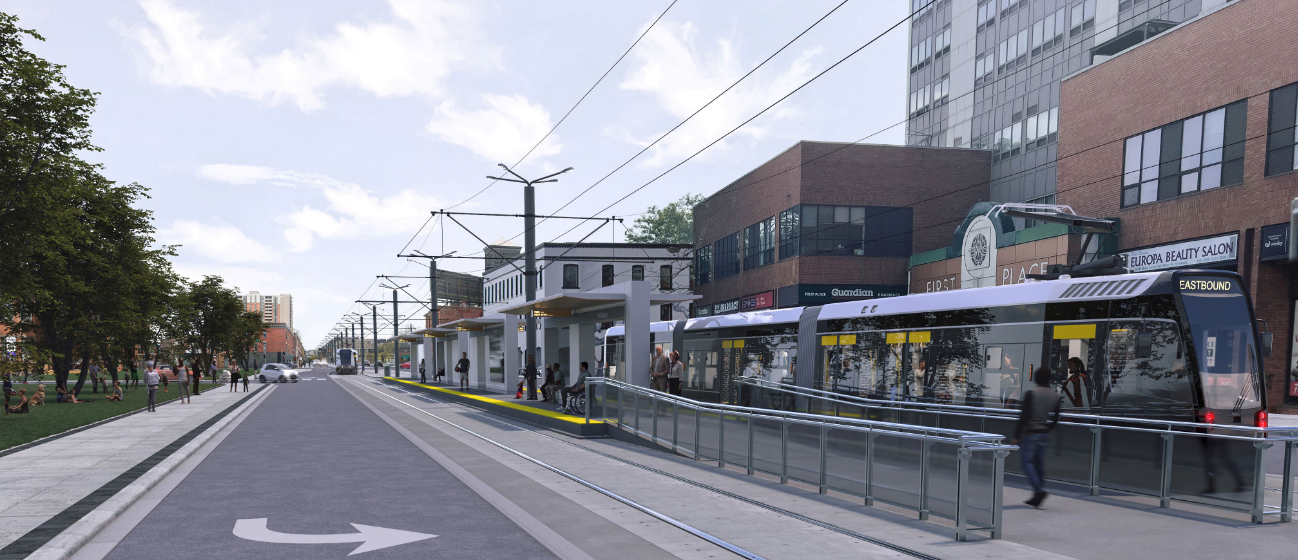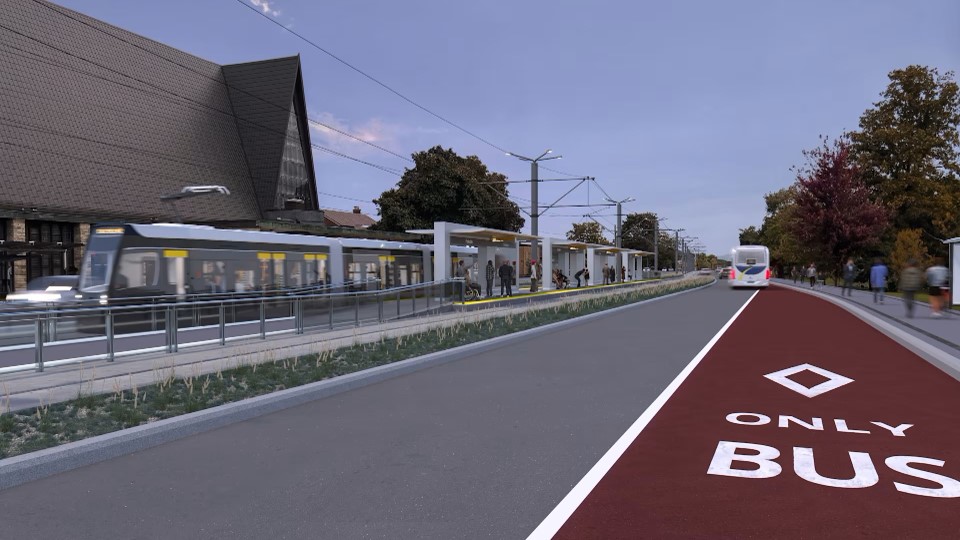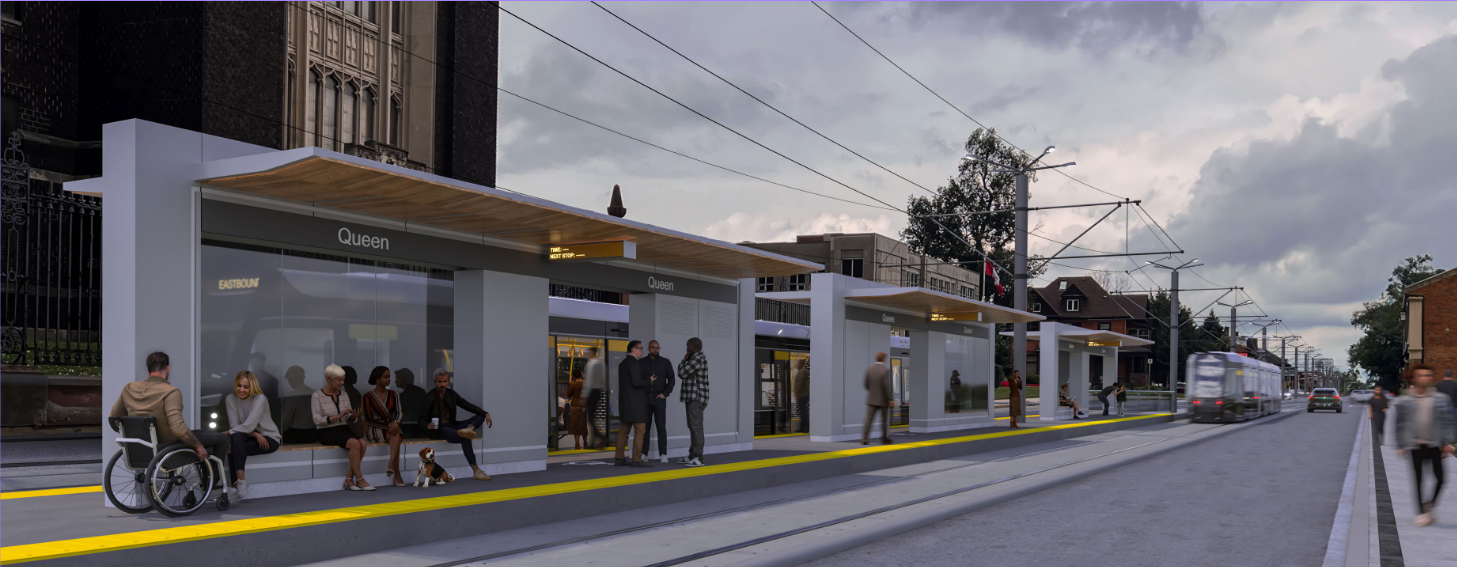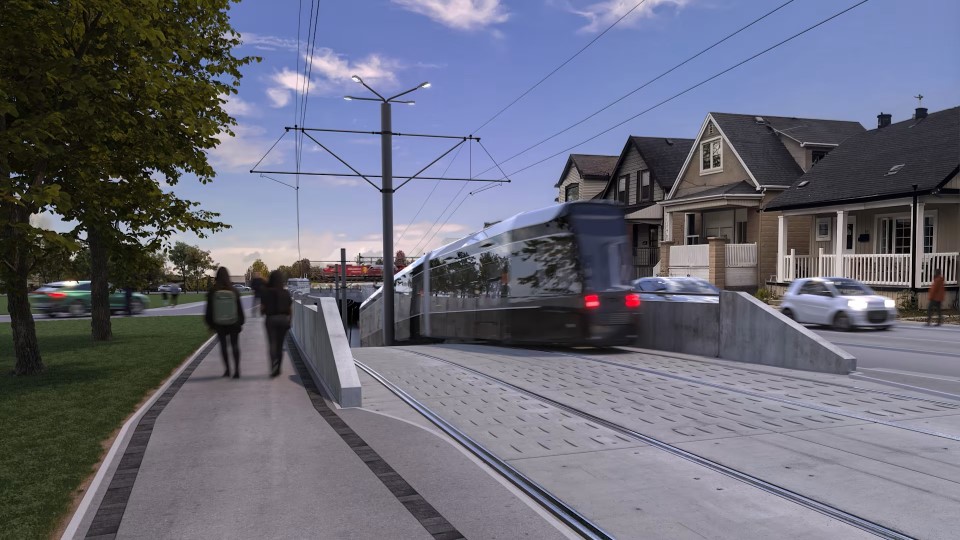Four consortia have been invited to submit their proposals for the Hamilton LRT project, following the issuance of a Request for Proposals (RFP) by the Government of Ontario, Canada. This first procurement package focuses specifically on civil and utility works, marking a significant step forward in delivering this transformational transit initiative.

The four consortia are:
- Hamilton Synergy Alliance (applicant lead: AtkinsRéalis Major Projects);
- Steel City Alliance (applicant lead: Dufferin Construction Co);
- Kenaidan Murphy Joint Venture (applicant lead: Murphy Infrastructure);
- Aecon Hamilton Transit LRT Partnership (applicant lead: Aecon Infrastructure Management).
This RFP follows a rigorous Request for Qualifications (RFQ) process, through which four highly capable teams were shortlisted based on their expertise and experience. The selected consortia are now tasked with developing comprehensive proposals for a range of civil engineering works. These include utility relocations, road realignments, the construction of structures and bridges, grade separations, as well as pedestrian-friendly elements such as sidewalks and traffic control systems. All works are planned along the proposed 14-km light rail corridor, which stretches from McMaster University in the west to Eastgate Square in the east.
“We are one step closer to getting shovels in the ground on this vital public transit project. The Hamilton LRT will connect thousands of residents to employment opportunities and housing, while supporting local jobs and economic growth,” said Prabmeet Sarkaria, Ontario’s Minister of Transport.
 The Hamilton LRT will deliver a high-quality, modern, and sustainable mode of transportation, providing frequent and reliable service on a dedicated track separate from regular vehicular traffic. Designed to be fully electric, the low-emission light rail vehicles will offer a cleaner, more environmentally friendly travel option for commuters across the city. The system will not only ease congestion but also contribute significantly to the city’s climate goals.
The Hamilton LRT will deliver a high-quality, modern, and sustainable mode of transportation, providing frequent and reliable service on a dedicated track separate from regular vehicular traffic. Designed to be fully electric, the low-emission light rail vehicles will offer a cleaner, more environmentally friendly travel option for commuters across the city. The system will not only ease congestion but also contribute significantly to the city’s climate goals.
Metrolinx, as the project owner and delivery agency, has structured the Hamilton LRT into two major implementation packages. This strategic separation allows for corridor-specific complexities to be addressed early, leaving a more manageable and clearly defined risk profile for the subsequent contract that will deliver the LRT infrastructure and operational systems.
The first package – Civil Works and Utilities (Package 1) – represents approximately 50 per cent of the total construction value. This phase encompasses both public and private utility works, construction of civil structures such as bridges and grade separations, as well as enhancements to the urban realm. This includes improved streetscapes, cycling infrastructure, pedestrian safety upgrades, and high-speed rail integration features.
Package 2 will comprise the stops, rail infrastructure, and all LRT systems. This will include the guideway, track work, operational systems, and the construction of an operations, maintenance, and storage facility (OMSF). The package may also involve a concession period for operations and maintenance. Together, these components will form the backbone of the full-service LRT system.

In May 2021, the Province of Ontario, in partnership with the Government of Canada, announced a joint investment of up to CAD 3.4 billion (USD 2.5 billion) in the Hamilton LRT. Under this funding agreement, each level of government will contribute up to CAD 1.7 billion (USD 1.2 billion). This announcement followed a technical review conducted in November 2020, which found that a CAD 1 billion (USD 723 million) LRT system, funded solely by provincial capital, would not result in a transit line of sufficient length or capacity to provide meaningful benefit to the residents of Hamilton. Federal support was therefore essential to create a viable and impactful public transport solution.
Once completed, the Hamilton LRT will serve an estimated 50,000 daily riders and integrate seamlessly with the existing Hamilton Street Railway bus network and the regional GO Transit rail services. The line will include 17 strategically located stops, providing convenient access to major destinations such as McMaster University, City Hall, Hamilton Stadium, downtown Hamilton, Eastgate Square, and other key employment and cultural hubs across the city. This new transit line will place tens of thousands of jobs, homes, and educational opportunities within walking distance of rapid, dependable public transport.

The Hamilton LRT is part of Ontario’s broader vision for modern, integrated public transit in the Greater Toronto and Hamilton Area. It ranks as the fifth major priority project alongside the Ontario Line, the Scarborough metro extension, the Eglinton Crosstown West extension, and the Yonge North metro extension. These projects are supported by the federal government through the Investing in Canada Infrastructure Programme, under which Ottawa is contributing up to 40 per cent of funding. In 2021, the federal government pledged a total of CAD 10.7 billion (USD 7.7 billion) to help deliver these transformative transit projects.
In total, Ontario’s regional transit expansion strategy is valued at CAD 28.5 billion (USD 20.6 billion), with the Province contributing approximately CAD 17 billion (USD 12.3 billion). This significant investment underscores the government’s commitment to building cleaner, faster, and more efficient transportation networks that will drive economic growth, improve quality of life, and meet the evolving needs of a growing urban population.
Share on:



